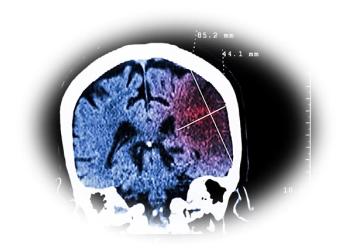
Smartphone Screening for Atrial Fibrillation
Medicine is finally catching up with the smartphone/smartwatch era – and it’s about time!
[[{"type":"media","view_mode":"media_crop","fid":"61451","attributes":{"alt":"","class":"media-image media-image-right","height":"222","id":"media_crop_9842317510916","media_crop_h":"0","media_crop_image_style":"-1","media_crop_instance":"7774","media_crop_rotate":"0","media_crop_scale_h":"0","media_crop_scale_w":"0","media_crop_w":"0","media_crop_x":"0","media_crop_y":"0","style":"float: right;","title":" ","typeof":"foaf:Image","width":"190"}}]]Every physician has had the experience of seeing patients who present for their appointment armed with volumes of personal health data (such as heart rate trends) from a smartwatch or other fitness monitoring device. Given the lack of validation of these devices and algorithms, the reliability of these data is questionable. Most physicians, therefore, don’t know what to do with this information.
A study presented at Europace1 2017 suggested that a novel iPhone app can reliably differentiate sinus rhythm from atrial fibrillation, and can aid in the detection of infrequent paroxysms of AF. The app uses the phone’s camera lens to obtain a plethysmograph to help determine whether the rhythm is regular or irregular based on automatically detected RR intervals. Equal numbers of sinus rhythm and AF patients (40 in each arm) were included to validate the detection algorithm and assess the app’s performance.
After testing 3 different statistical methods and applying filters and combining 2 methods, the authors concluded that the algorithm was able to distinguish between AF and SR with a sensitivity and specificity of 95%. (Note: these results should be interpreted with a hint of caution. This type of case-control study is subject to overestimation bias.)
With the aging population worldwide, the prevalence of AF continues to grow. With increased disease burden and its associated comorbidities, more sophisticated and easily accessible technologies need to be developed to screen for subclinical AF. Holter monitors and ambulatory monitoring are cumbersome and costly.
This study is one of the early validations of an existing technology (details of which have been previously published2) and its application into screening for AF. The next step is incorporation of this technology into a smartwatch and use of the technology to detect asymptomatic subclinical AF. This type of new detection technology could be used to detect AF after cryptogenic (such as in CRYSTAL-AF3) stroke. It could also be used for those individuals who have risk factors for stroke with device-detected AF (as is currently being studied in ARTESIA4).
The app was created by the German company
This study makes me believe that medicine is finally catching up with the smartphone/smartwatch era – and it’s about time!
The app is available in English for Android and can be accessed at
References:
1. Krivoshei et al. Smart Detection of Atrial Fibrillation. Europace. 2017;19(5):753-757.
2. McManus DD, Lee J, Maitas O, et al. A novel application for the detection of an irregular pulse using an iPhone 4S in patients with atrial fibrillation. Heart Rhythm. 2013;10:315–319.
3. Sanna T, Diener H-C, Passman RS, et al. Cryptogenic stroke and underlying atrial ribrillation.
4.
Newsletter
Enhance your clinical practice with the Patient Care newsletter, offering the latest evidence-based guidelines, diagnostic insights, and treatment strategies for primary care physicians.





















































































































































































































































































